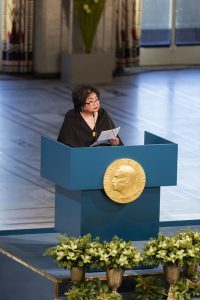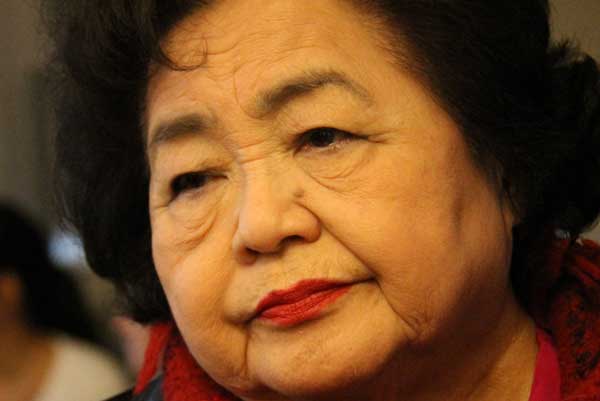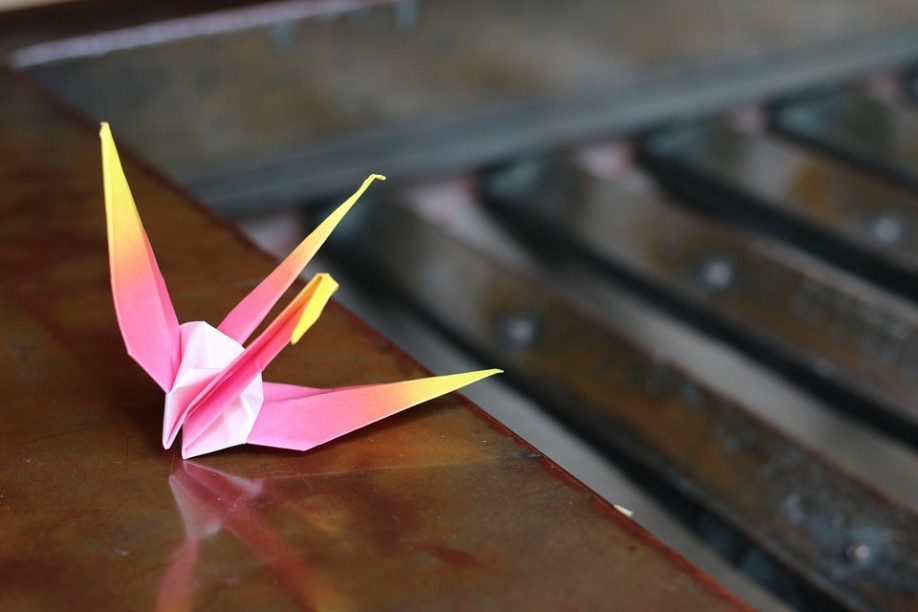The Atomic Bomb Survivors
The people who survived the atomic bombings of the Japanese cities of Hiroshima and Nagasaki are called Hibakusha, which means “person exposed to explosion.”
Hibakusha are the people who were within a few kilometers of the bomb site at the time of the explosion; those who were within two kilometers of the bomb site within two weeks of the bombings; those who were exposed to radioactive fallout; and the children of women who during their pregnancy belonged to one of the previous categories.
Through scientific studies, knowledge has been gained about the long-term consequences of radioactive radiation. But they have also borne important testimony about the humanitarian consequences of nuclear weapons. In addition to disease, Hibakusha have also been excluded from society, marginalized and discriminated against.
Still today, atomic bomb survivors are treated in hospitals in Hiroshima and Nagasaki due to the radiation that has been passed on to subsequent generations.
Higher risk of getting cancer
The Life Span Study (LSS) has mapped the causes of death in 86,000 of 120,000 Hibakusha between 1950 and 2003, comparing the results with a control group. It was found that the incidence of cancer and death was more common in hibakusha compared to the control group.
Atomic bomb survivors have, above all, been affected by and have a higher risk of being affected by leukemia and thyroid cancer.
Other diseases
Not only has cancer been shown to have an increased incidence among atomic bomb survivors, but blood diseases, cardiovascular diseases and lung diseases are more common as well. Even today, over 75 years after the US bombed Hiroshima, new cases of bone marrow damage have been found in Hibakusha.
As of March 31, 2007, the Japanese Ministry of Health, Labor and Welfare recorded 251,834 Hibakusha who were still alive. The average age of the survivors was then 74.6 years and many of them were ill. Despite this, many survivors have traveled around the world to share their experiences about what nuclear weapons mean to people.
Life after being exposed to an atomic bomb
Many Hibakusha have had to live with severe illnesses, pain and problems. It has also been difficult to find a place in society afterwards. The survivors were considered unwilling or unfit to work due to what was called “A-bomb disease”. People avoided the atomic bomb survivors as if they were contagious, and many found it impossible to marry.
Most of the atomic bomb survivors have suffered from depression and have also struggled with difficult questions such as “Why did I survive?” and “How could life have been different if I had not been in Hiroshima or Nagasaki that day?”
Traumatic experiences
For fear of being ostracized from society, survivors and their families have been reluctant to allow themselves to be studied. Many are also afraid to be open about their difficult experiences and feelings in front of strangers, with the risk of being misunderstood. The American psychologist and researcher Robert Jay Lifton has done an early major study of the survivors’ mental health.
He showed that the survivors had difficulty rediscovering their identity and finding a balance in life after their close encounter with atomic bomb death. Many of them also suffer from a sense of shame and guilt that they survived, while so many of their relatives and friends died. For many, all the horrible things the survivors have seen and experienced have led to a narrowing and shutting down of thoughts and feelings about the event. Lifton believes that Hibakusha have been ostracized from society due to being associated with “uncleanness” after being in such close contact with so much death, misery and suffering.
Post-traumatic stress disorder
Extreme psychological trauma experiences result in severe stress. After a major crisis or disaster, various mental and psychosomatic illnesses can occur. Conditions such as anxiety and depression are common. In recent years, it has been understood that many Hibakushas suffered from post-traumatic stress disorder (PTSD). Nightmares and intrusive painful memories haunt them.
Survivors tell of dead and burned people lying in several layers on the ground; about the stench days after the bombings when wounds began to become infected and worms began to feed on the bodies of the dead; about how the skin fell off their relatives when they tried to take care of them. These memories are very difficult to live with.
Setsuko Thurlow
Setsuko was 13 years old when the atomic bomb fell on her hometown of Hiroshima. Today, she is one of the few Hibakusha still alive. She has devoted a large part of her life to fighting to get rid of nuclear weapons.
On the morning of August 6, 1945, Setsuko Thurlow was at the military headquarters located on the outskirts of Hiroshima, 1.8 kilometers from the epicenter of the atomic bomb. In the middle of the morning gathering, where she had sworn allegiance to the emperor, she suddenly saw a powerful bright flash.
Floated in the air 
She tells how she remembers floating in the air, and then everything went dark. The house she was in had collapsed and she was trapped under all the rubble. Finally, a man helped her up and took her out of the building, which had begun to burn. Her friends were not so lucky and many of them died due to being caught in the fire.
After the bomb exploded, she could only watch as friends and family members died, either immediately or later from the latent effects of the atomic bomb. There was nothing to be done to lessen the suffering of the injured. The powerlessness was all-consuming and life afterwards has been characterized by feelings of guilt and questions to which there are no answers.
Setsuko tells us that many who survived wished they had died, because surviving is much more difficult.
Sources and more information
Hiroshima & Nagasaki – 70 years on, survivors and their families still gravely affected, International Committee of the Red Cross, ICRC
The International Committee of the Red Cross and nuclear weapons: From Hiroshima to the dawn of the 21st century, François Bugnion
International Campaign to Abolish Nuclear Weapons (ICAN), Nobel Lecture, Beatrice Fihn och Setsuko Thurlow, The Nobel Prize
ICRC report on the effects of the atomic bomb at Hiroshima, International Review of the Red Cross, 2015






